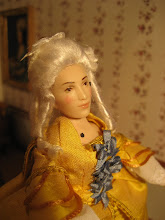
Lucian päivää on vietetty 13 joulukuuta jo 300-500-luvulta lähtien. Lucia oli italialainen neito, joka omisti elämänsä köyhille ja jota palvottiin myöhemmin pyhimyksenä. Päivää vietetään vuoden pimentä yötä edeltävänä päivänä, joka oli gregoriaanisen kalenterin mukaan 13 joulukuuta. Suomeen Lucia-perinne rantautui Saksasta muiden jouluperinteiden mukana 1600-1700-luvuilla. Kansanomaiseen Lucia-perinteeseen liittyy myös pakanallinen noitamainen naishirviö Luciferda ja pimeänä yönä hänet pidettiin loitolla juhlimalla ja valvomalla. 1700-luvulla Lucian päivää juhlittiin kartanoissa ja talonpoikaistuvissa. Nuorin tytär, muu säätyläsineito tai joku talon piioista pukeutui Lucia-neidoksi, joka herätti vanhemmat tuomalla heille runsaan aamiaistarjottimen kynttiläkruunu päässään. Hän tarjoili jouluvehnäsiä myös muulle heräilevälle talonväelle. Lucian päivää vietetään nyky-Suomessa innokkaasti ja koulun joulujuhlissa on erityinen kunnia tulla valituksi Lucia-neidoksi.
The Lucia day has been celebrated since 300-500 AD. Originally Lucia was a young Italian lady who dedicated her life to the poor and was later worshipped as a saint. Lucia day was the day preceeding the darkest night, 13th December according to the Gregrorian kalendar. Lucia tradition came to Finland from Germany in 17th and 18th century along with other Christmas traditions (such as Christmas tree). In the background of the peasant Lucia tradition is also a pagan she-devil Luciferda who was present during the darkest time of the year. The whole day and night was spent celebrating, eating and drinking to keep her away. In manors of the 18th century the youngest daughter of the family, some other noble young lady or a female servant dressed up as Lucia with a candle crown on her hair and brought an abundant breakfast tray to the parents and served Lucia buns to other folks waking up. Even today Lucia tradition is very popular in Finland. It is an honour for a young lady to be chosen to be Lucia of the Christmas feast of her school.
Kartanon tytär Marilena on pukeutunut Luciaksi. Hän tarjoilee kahvia ja Lucia-pullia. Daughter Marilena has dressed up as Lucia. She is serving coffee and Lucia buns.

Lucian hiukset ovat vielä aamukunnossa... Lucia's hair is still in the morning shape...

Lucia-pullia leivottiin ensimmäistä kertaa Saksassa 1600 -luvulla eikä niillä aluksi ollut mitään tekemistä Lucia-neidon kanssa. Pullat syntyivät kissan asuun pukeutuneen paholaisen häätämiseksi, siitä niiden ruotsalainen nimi: lussekatt.
Lucia buns were baked for the first time in Germany in 17th century and they originate from the pagan line of Lucia. Buns were baked to shoo off the devil dressed as a cat. The Swedish name of the bun is "lussekatt", "Luci cat."





Ei kommentteja:
Lähetä kommentti